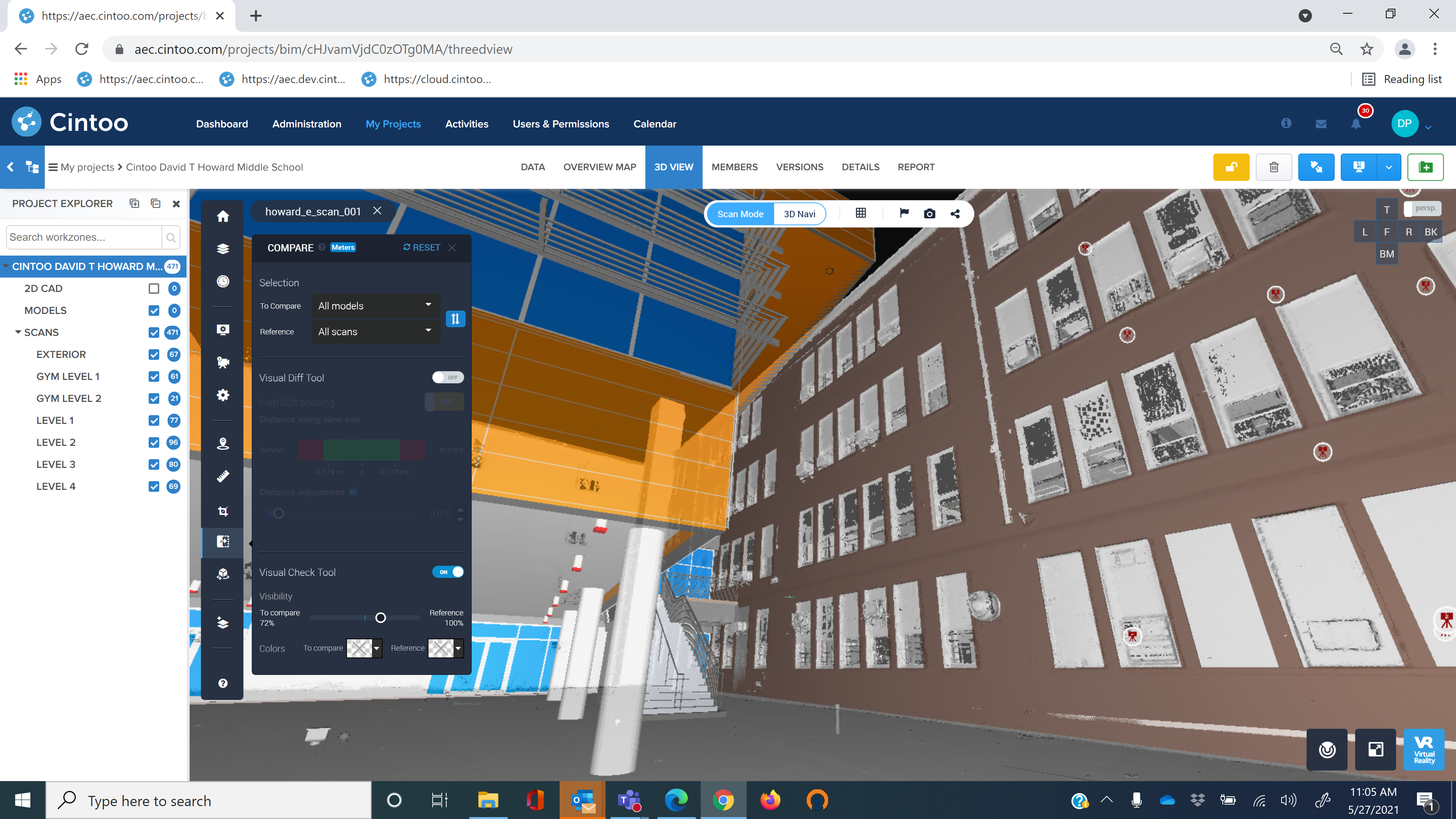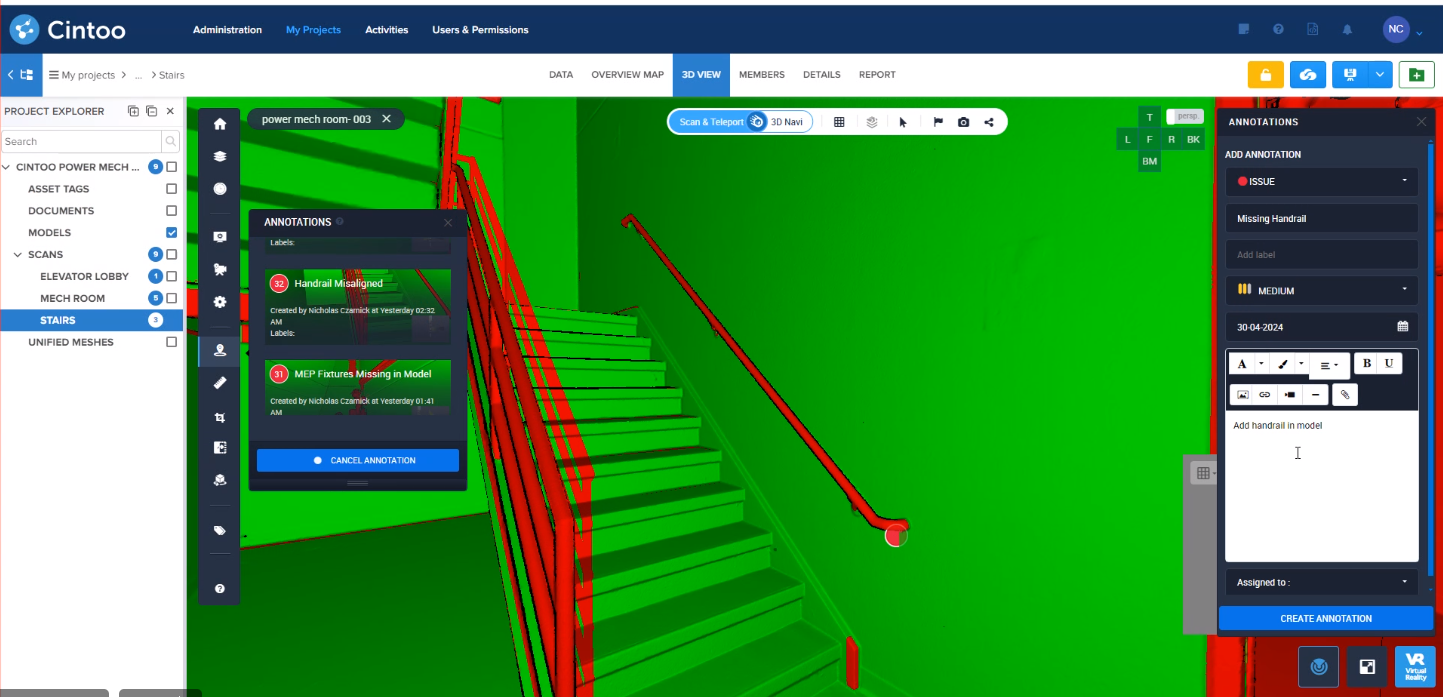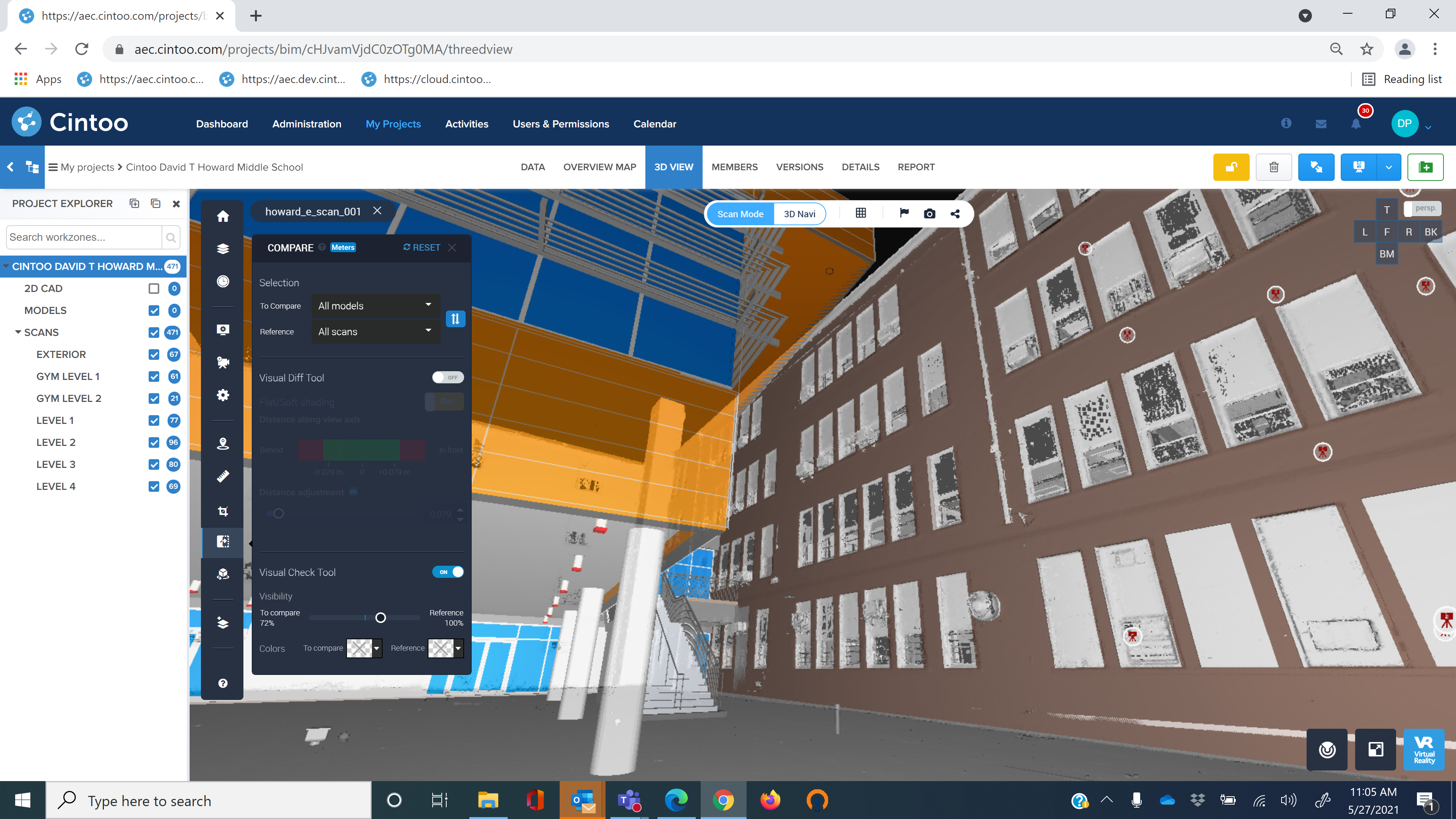
In the worlds of Architecture, Engineering, and Construction (AEC) and Industry 4.0, the ability to seamlessly integrate design models with real-world scan data is crucial. As digital twin technology, point cloud management, and collaborative workflows become industry standards, software platforms need to evolve to support true interoperability. One such transformative solution is ACC Autodesk—Autodesk Construction Cloud—an integrated suite that brings model design, data collaboration, and lifecycle management under one umbrella. In this article, we’ll explore how ACC Autodesk integrates into laser scanning workflows and how platforms like Cintoo make this process intuitive, powerful, and ready for the future.

ACC Autodesk is a cloud-based platform designed to support every phase of the construction process, from design and planning to operations. When integrated with laser scanning technologies, ACC Autodesk enables teams to visualize and manage point cloud data alongside Building Information Modeling (BIM) content.
Laser scanning produces dense point clouds that capture the as-built reality of a site. However, this raw data can be massive and difficult to work with natively. That’s where platforms like Cintoo come in—offering point cloud-to-mesh conversion and high-resolution streaming that reduce data complexity while enhancing visual accuracy. Once mesh-based scan data is uploaded to Cintoo, users can integrate it directly with models hosted in ACC Autodesk using a secure API connection.
This integration forms the foundation of workflows such as Scan-to-BIM and Scan-vs-BIM, allowing stakeholders to overlay models against actual site conditions and detect discrepancies early in the project lifecycle.
ACC Autodesk supports model design through its tight integration with industry-standard tools like Autodesk Revit®, AutoCAD®, and Navisworks®. These authoring tools feed directly into the ACC ecosystem, enabling real-time updates, version control, and collaborative model development.
Design teams can author models in Revit, store and manage them in ACC Autodesk, and then share those models with downstream stakeholders—whether they’re field engineers or BIM/VDC managers. With built-in support for BIM 360® Docs, models stored in ACC can be accessed anywhere and imported into third-party platforms like Cintoo for visualization against point cloud data.
This interconnectedness ensures that the model isn't just a theoretical construct—it becomes a living, adaptive entity that reflects and responds to real-world conditions.
One of the biggest challenges in digital construction is the complexity of data formats and systems. ACC Autodesk addresses this by supporting integrations with a wide array of third-party tools and file types including RCP, RCS, IFC, DWG, STEP, and more.
With Cintoo, users can easily import models from ACC Autodesk directly into designated Work Zones. Cintoo’s intuitive UI allows users to overlay these models on laser scan meshes in a browser-based viewer with zero data simplification. This results in an incredibly accurate visual representation that supports clash detection, issue tracking, and progress monitoring.

All it takes is a few clicks to link ACC Autodesk with Cintoo—once permissions are granted, users can navigate through their ACC projects and select model files to be streamed into Cintoo for comparison and coordination.
Cintoo was purpose-built for laser scanning and BIM collaboration, making it the ideal partner for ACC Autodesk workflows. Its proprietary mesh streaming technology reduces point cloud file sizes by 10 to 30 times while retaining maximum fidelity. These lightweight 3D meshes are then accessible through standard WebGL browsers, removing the need for heavy desktop software or GPU-intensive applications.
By integrating directly with ACC Autodesk, Cintoo enables real-time model overlays, annotation, and model discrepancy reporting. Users can even generate BCF (BIM Collaboration Format) issues from within Cintoo and track them in ACC or any issue-tracking system.
Moreover, Cintoo’s ability to support multiple model formats—Revit (.rvt), Navisworks (.nwd/.nwc), and IFC—means that whatever your authoring environment, your data can be aligned with site conditions for decision-making.
After overlaying the BIM model onto the scan data and detecting discrepancies, the next step is rework and refinement. Cintoo supports seamless export back to ACC Autodesk in formats such as RCS, which preserves the model's coordinate system and accuracy.
This process allows design teams to correct models based on actual conditions and then re-upload them to ACC Autodesk where they’re instantly available for field teams, clash detection tools, and ongoing documentation.
Such a bi-directional data flow ensures that design intent, construction execution, and operational handover remain in sync—one of the key promises of Industry 4.0.
The integration of ACC Autodesk with platforms like Cintoo is more than just a technical enhancement—it’s a revolution in how projects are delivered. By enabling model design, verification, and correction within a single, collaborative ecosystem, stakeholders gain access to:
In a world where digital twins and smart buildings are becoming the norm, integrating ACC Autodesk into your laser scanning and 3D model design workflows is not just a competitive advantage—it’s a necessity. Read our latest AEC ebook on how reality capture saves construction companies time and money.
